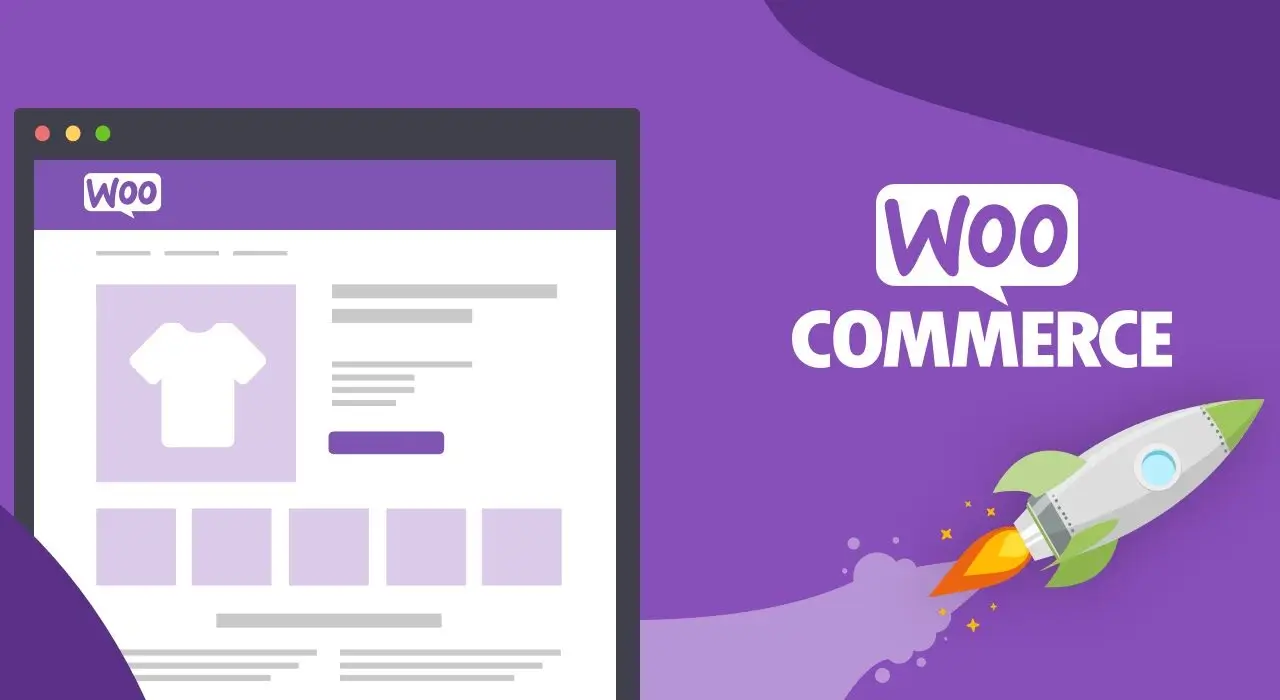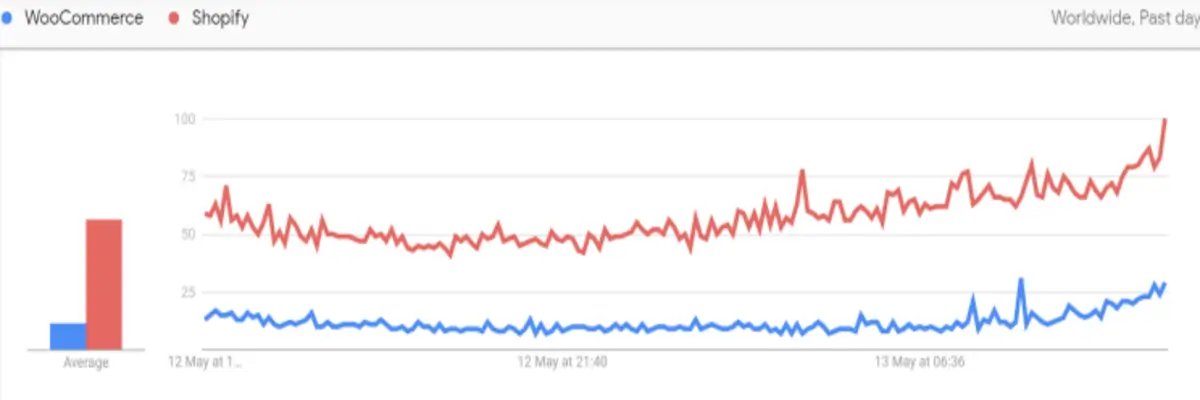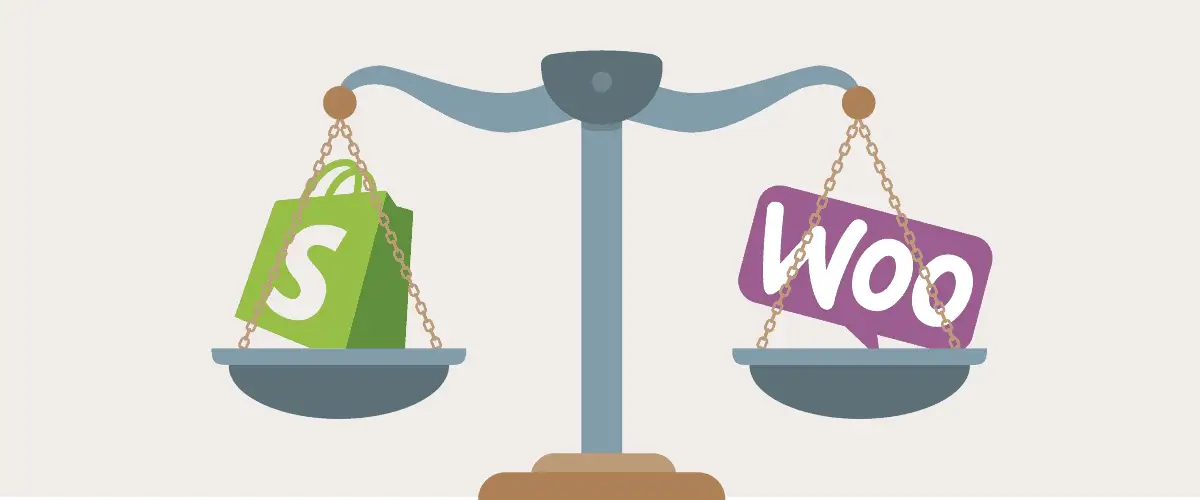
In today’s digital age, having an online presence is vital for business success. E-commerce platforms like WooCommerce and Shopify have transformed the landscape, offering efficient ways for businesses to sell products online. However, deciding between these two giants can be overwhelming for entrepreneurs. This detailed comparison will explore the key features, advantages, and disadvantages of WooCommerce and Shopify to help you make a well-informed decision.
Overview Of WooCommerce And Shopify
WooCommerce is an open-source e-commerce plugin that is used with WordPress. It is free to download and use, and it powers over 30% of online stores worldwide. The platform offers a range of features, including an intuitive checkout process, unlimited products, customizations, and support for multiple payment gateways. Here is a closer look at WooCommerce:

WooCommerce, launched in 2011, is a free, open-source plugin for WordPress. It enables users to convert their WordPress websites into fully functional online stores. WooCommerce’s popularity has soared due to its adaptability, scalability, and extensive customization options.
Shopify founded in 2006, Shopify is a complete e-commerce solution that empowers users to create and manage online stores without requiring advanced technical skills. It has become one of the leading e- commerce platforms globally, serving millions of businesses across various sectors. Here is a closer look at Shopify:

Shopify is a popular SaaS (Software as a Service) e-commerce platform that hosts over a million businesses worldwide. It is an all-in-one platform that offers users a range of features, including web hosting, SSL security, and a user-friendly interface.tures, such as premium themes and extensions.
Setup And Installation
Setting up WooCommerce necessitates a WordPress website, as it functions as a plugin within the WordPress ecosystem. Users must install WordPress, choose a hosting provider, and add the WooCommerce plugin. While WooCommerce itself is free, users may incur expenses for domain registration, hosting, and premium extensions.
Shopify offers a straightforward setup process, allowing users to establish an online store within minutes. Users create a Shopify account, select a subscription plan, choose a domain name, and customize their store using Shopify’s intuitive interface. Shopify’s subscription plans include hosting, SSL certification, and security features, simplifying the setup process for beginners.
Design And Customization
WooCommerce provides access to numerous WordPress themes and plugins, offering endless design possibilities. Users can customize their online stores using drag-and-drop page builders, CSS editing, and HTML customization. However, designing a WooCommerce store may necessitate technical expertise or hiring a developer for complex customization tasks.
Shopify offers a variety of professionally designed themes that users can fully customize to suit their needs. Users can personalize their stores using Shopify’s theme editor, which offers intuitive customization options without requiring coding skills. Additionally, Shopify’s app store offers a wide range of apps and integrations for enhancing store functionality and design.
E-Commerce Features
As an open-source platform, WooCommerce offers extensive e-commerce features, including product management, inventory tracking, payment gateways, and shipping options. WooCommerce seamlessly integrates with various WordPress plugins for additional functionalities such as SEO optimization, email marketing, and analytics.
Shopify provides a comprehensive set of e-commerce features, including product management, inventory tracking, abandoned cart recovery, and multichannel selling capabilities. Additionally, Shopify offers built-in tools for marketing, SEO optimization, and analytics, enabling users to manage all aspects of their online business from a single dashboard.
Scalability And Performance
WooCommerce scalability depends on the underlying WordPress infrastructure and hosting provider. While WooCommerce can efficiently handle small to medium-sized stores, scaling larger stores may require investing in robust hosting solutions and optimizing website performance.
Shopify is renowned for its scalability and reliability, capable of handling stores of all sizes, from startups to enterprise-level businesses. Shopify’s cloud-based infrastructure ensures high performance, stability, and security, even during peak traffic periods. Additionally, Shopify offers automatic updates and maintenance, eliminating the need for manual interventions.
World Analysis
WooCommerce vs. Shopify: Which E-commerce Platform Reigns Supreme in 2024?

Examining Google Trends data over the past five years reveals that both WooCommerce and Shopify have steadily grown in popularity. Nevertheless, Shopify holds a slight advantage over WooCommerce.
Pricing And Cost
WooCommerce itself is free to use, but users may incur expenses for domain registration, hosting, premium themes, extensions, and developer fees. While WooCommerce offers flexibility in terms of cost, users should consider additional expenses associated with maintaining and optimizing their online stores.
Shopify operates on a subscription-based pricing model, with plans ranging from basic to advanced tiers. The subscription fees include hosting, security, and support, with additional costs for transaction fees, premium themes, apps, and customizations. While Shopify’s pricing may appear higher upfront, it provides a comprehensive solution with predictable costs and minimal maintenance overhead.
Payment Gateways And Transaction Fees
WooCommerce supports a wide range of payment gateways, including PayPal, Stripe, Square, and more, allowing users to select the best option for their business. Since WooCommerce is self-hosted, users have full control over transaction fees and can negotiate rates with payment processors.
Shopify offers built-in payment processing through Shopify Payments, along with support for third-party payment gateways. While Shopify Payments simplifies the setup process, users may incur transaction fees ranging from 2.9% + 30¢ to 2.4% + 30¢ per transaction, depending on their chosen plan. Users can also integrate additional payment gateways, albeit with additional transaction fees.
Pros And Cons

WooCommerce Pros
- Flexibility: WooCommerce provides unmatched versatility, enabling users to tailor every aspect of their online store to align with their brand identity and business needs.
- Integration with WordPress: As a WordPress extension, WooCommerce seamlessly integrates with the WordPress ecosystem, granting access to a wide range of plugins and themes for enhanced functionality and design.
- Cost-Effectiveness: WooCommerce itself comes at no cost, making it an appealing choice for budget-conscious users. However, users should consider additional expenses related to hosting, domain registration, and premium extensions.
- Ownership and Control: With WooCommerce, users retain complete ownership and control over their online stores, including data privacy, security, and customization options.
- Scalability: While WooCommerce can effectively manage small to medium-sized stores, scaling larger stores may require additional optimization and investment in hosting resources.
WooCommerce Cons
- Technical Expertise Required: Configuring and customizing a WooCommerce store may necessitate technical proficiency, particularly for intricate customizations or resolving issues.
- Maintenance Overhead: Users are responsible for administering updates, security patches, and backups for their WooCommerce store, which can be time-consuming and entail ongoing maintenance.
- Hosting Dependencies: WooCommerce relies on WordPress hosting, and the performance and scalability of the store may be influenced by the selected hosting provider.
- Transaction Fees: While WooCommerce itself does not impose transaction fees, users may face charges from payment gateways, which can impact the overall operational cost of running an online store.
- Customer Support: While WooCommerce benefits from the extensive WordPress community, dedicated customer support options may be limited compared to platforms like Shopify.
Shopify Pros
- Ease of Use: Shopify offers a user-friendly interface and streamlined setup process, making it accessible to users with varying levels of technical know-how.
- All-in-One Solution: Shopify provides a comprehensive array of tools and features, encompassing hosting, security, payment processing, and inventory management, obviating the need for third-party integrations.
- Scalability: Shopify’s cloud-based infrastructure ensures high performance and reliability, capable of accommodating stores of all sizes, from startups to enterprise-level businesses, without the need for manual intervention.
- Customer Support: Shopify offers round-the-clock customer support via live chat, email, and phone, delivering prompt assistance to users globally.
- Built-in Marketing Tools: Shopify includes built-in marketing features such as SEO optimization, social media integration, and abandoned cart recovery, empowering users to drive traffic and boost conversions.
Shopify Cons
- Cost: Shopify operates on a subscription-based pricing model, with monthly fees ranging from basic to advanced tiers. Transaction fees also apply for online payments, which can augment operational costs for businesses.
- Limited Customization: While Shopify provides customization options through its theme editor and app store, the extent of customization may be restricted compared to WooCommerce’s flexibility.
- Dependency on Shopify: Users are tethered to the Shopify platform, and transitioning to a different platform may be challenging due to data lock-in and platform-specific features.
- Transaction Fees: Shopify levies transaction fees for online payments, which fluctuate based on the chosen plan. While using Shopify Payments can mitigate transaction fees, additional charges may apply for third-party payment gateways.
- Ownership and Control: While Shopify offers convenience and ease of use, users have less control over their online stores compared to self-hosted solutions like WooCommerce. Customizations may be limited, and users are subject to Shopify’s terms and conditions.
Support And Community
WooCommerce benefits from the extensive WordPress community, providing comprehensive documentation, forums, tutorials, and developer resources. Users can seek assistance from community forums, official documentation, or hire developers for technical support and customization service.
Shopify offers 24/7 customer support via live chat, email, and phone, ensuring prompt assistance for users worldwide. Additionally, Shopify provides comprehensive documentation, tutorials, and a dedicated community forum where users can seek advice, share insights, and connect with other merchants.
Conclusion
In conclusion, both WooCommerce and Shopify offer robust e-commerce solutions with distinct strengths and capabilities. WooCommerce appeals to users seeking flexibility, customization, and cost-effectiveness, particularly those already using WordPress. Conversely, Shopify provides a user-friendly, all- in-one platform with unparalleled scalability, reliability, and support, making it ideal for beginners and established businesses alike. Ultimately, the choice between WooCommerce and Shopify depends on your specific business requirements, budget, technical expertise, and long-term growth strategy. By considering the pros and cons outlined in this comparison, you can make a well-informed decision and embark on your e-commerce journey confidently.
Q: What differences exist between WooCommerce and Shopify?
A: WooCommerce, as an open-source WordPress plugin, contrasts with Shopify, an independent e-commerce platform. While WooCommerce provides greater flexibility and customization options, it demands more technical proficiency and relies on the WordPress framework. Conversely, Shopify offers a streamlined setup process, scalability, and dedicated support, making it accessible to users with varying levels of technical expertise.
Q: Which platform caters better to novices with limited technical know-how?
A: Generally, Shopify is favored by beginners due to its user-friendly interface and simplified setup. Users can establish and manage online stores without extensive technical skills. In contrast, WooCommerce may require familiarity with WordPress and basic coding knowledge for customization.
Q: Are there any fees associated with transactions on WooCommerce and Shopify?
A: While WooCommerce itself doesn’t impose transaction fees, users may encounter charges from payment gateways. Shopify, however, levies transaction fees for online payments, which vary based on the selected plan. Opting for Shopify Payments can exempt users from these fees, although additional charges may apply for third-party payment gateways.
Q: Which platform offers superior options for customizing online store designs?
A: WooCommerce provides extensive customization avenues through WordPress themes, plugins, and coding, enabling users to tailor their stores to match their brand. While Shopify also offers customization features via its theme editor and app store, it may have limitations compared to WooCommerce’s flexibility.
Q: How adaptable are WooCommerce and Shopify for burgeoning businesses?
A: Both WooCommerce and Shopify are scalable solutions suitable for businesses of all sizes. WooCommerce’s scalability hinges on the WordPress infrastructure and hosting provider, whereas Shopify offers cloud-based hosting with automatic scalability. Both platforms can seamlessly accommodate small startups to large enterprises.
Q: What support channels are available for users of WooCommerce and Shopify?
A: WooCommerce relies on the WordPress community for support, encompassing forums, documentation, and developer resources. Additionally, users can seek assistance from third-party developers or agencies for technical support. In contrast, Shopify provides round-the-clock customer support through live chat, email, and phone, complemented by comprehensive documentation and a dedicated community forum.
Q: Which platform provides superior SEO tools and functionalities?
A: Both WooCommerce and Shopify offer built-in SEO tools and functionalities to optimize online stores for search engines. WooCommerce leverages WordPress’s robust SEO features, including customizable URLs, meta tags, and content optimization. Meanwhile, Shopify boasts SEO-friendly attributes such as customizable meta tags, mobile responsiveness, and automated sitemap creation.


